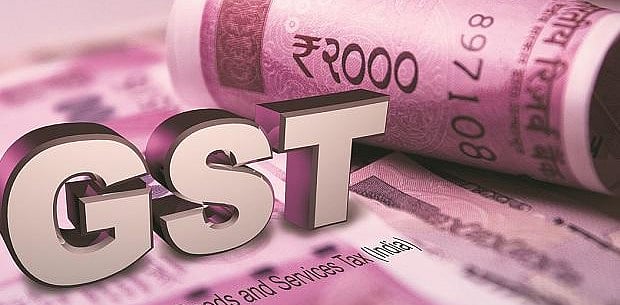
At the end of a recently held Goods and Services Tax (GST) Council meeting, the finance minister signalled the Union government’s inability to pay compensation to the states, describing the revenue shortfall as an ‘Act of God’ caused by the pandemic. The Union abdicating its responsibility and leaving the states on its own is problematic on many grounds. In the last few weeks many commentators have succinctly explained this. But one question still remains unanswered: Can states do anything on their own to hedge against similar risks in the future?
The Union has provided two options to the states – either borrow from the Reserve Bank of India (RBI) or from the open market. But both these measures create liabilities. A question worth considering is whether states can mobilise their own resources without creating liabilities.
Own revenue of states
Despite the GST taking away the ability of states to individually increase consumption tax rates, states still have a few other tax and non-tax handles which aren’t being leveraged to their fullest potential. Own revenue of states and UTs accounted for just about 56 per cent of their total revenue expenditure in 2017-18. Increasing this share of own revenue is critical for citizens to get better quality access to health, education, policing, and social welfare – all functions where state governments have the lead role in implementation under the Constitution.
But before we come to that, let’s first look at how states have been doing on the ‘own resource mobilisation’ front.
States’ performance in generating their own revenue can be analysed by comparing the ratio of own revenue generated to the gross state domestic product (GSDP). Higher GSDP implies higher economic activity which in turn means higher potential to collect revenue. Thus, a low own revenue to GSDP ratio reflects untapped potential. This is shown in the graph below.
Comparing the two charts, it can be observed that even many high-income states such as Haryana, Punjab, Maharashtra and Karnataka have a lot of scope for improvement. For instance, though Gujarat earns 71 per cent of its revenue itself, it ranks third lowest in its own revenue to GSDP ratio.
States’ own revenue can further be classified into two categories: One, revenue earned through taxes (including SGST and IGST) and two, revenue earned through user fees and charges for provision of services.
Tax revenue collection
Different states in India have comparable taxation powers, but the extent of tax mobilisation varies. Sales tax, state GST, state excise, stamps and registration fees are the major tax revenue earners for the states. While Maharashtra raises 70 per cent of its revenue requirement from these taxes, five states in India are not able to raise even 30 per cent of their revenue from taxes.
Governments find it easier to increase tax rates on items already taxed rather than increasing the tax base. Hence, it is likely that many states, in order to make up for the shortfall, will increase taxes on goods that are outside GST such as alcohol excise, stamp and registration duties on properties, and excise duties on petrol and diesel.
These moves would be counterproductive. There is a negative correlation between tax rates and tax base i.e. high tax rates disincentivise people from paying taxes and creates a parallel tax-avoidance economy. Hence, state governments need to focus on improving tax compliance. For instance, agricultural income tax comprises just 0.003 per cent of own revenue of all states as taxing agriculture has been a thorny issue. States need to move towards normalising agriculture as another commercial activity giving farmers freedom to sell their produce and land while taxing the sector at low rates but with a lot more consistency. Similarly, focusing on bringing properties under the tax net can reduce the dependence of urban local bodies on grants from states which would in turn translate to lower expenditure burden.
Increasing non-tax revenue
Apart from taxes, states can also raise revenue by charging for services provided by the government. These services can be economic (crop husbandry, animal husbandry, power, irrigation etc.), social (education-related such as examination fees, book sales and health-related such as receipts from hospitals etc.) or general (traffic fines, administrative service fees etc). For political reasons, state governments have been unable to exploit this opportunity in the past. The latest RBI annual state finances report observes that states’ non-tax revenue has remained volatile, dropping significantly over the last few decades.
States must figure out their comparative advantage and leverage it. Jharkhand raised Rs. 5,943 crores of its total revenue of ₹52,756 crores from industries in FY 2017-18. J&K was able to generate six per cent of its total revenue from the power sector while Kerala was able to generate Rs. 9,034 crores from lotteries alone.
State governments must follow the Wicksellian dictum: “Wherever possible, charge” for private goods. Appropriately designed and implemented user fees can go a long way in getting states out of financial trouble. Besides, pricing scarce resources such as water for irrigation will also reduce overconsumption.
Thus, there exists massive divergence between states when it comes to their present strategies and their capacities to raise their own resources. Even as they seek more devolution and GST revenue from the Union government, they must focus on reducing their dependencies on the Union government.
On tax revenue, this is best done by increasing and encouraging more economic activity to happen legally in states and taxing these businesses at reasonable rates. For raising non-tax revenue, user charges need to be collected where due. There are a lot of lessons that states can learn from each others’ experiences here. Employing technology to increase compliance with taxes and user fees would be a worthwhile investment. Kicking the can down the road is no longer an option for the states.
(Sarthak Pradhan and Pranay Kotasthane undertake research on public finance at the Takshashila Institution)
Disclaimer: The views expressed above are the author’s own. They do not necessarily reflect the views of DH.